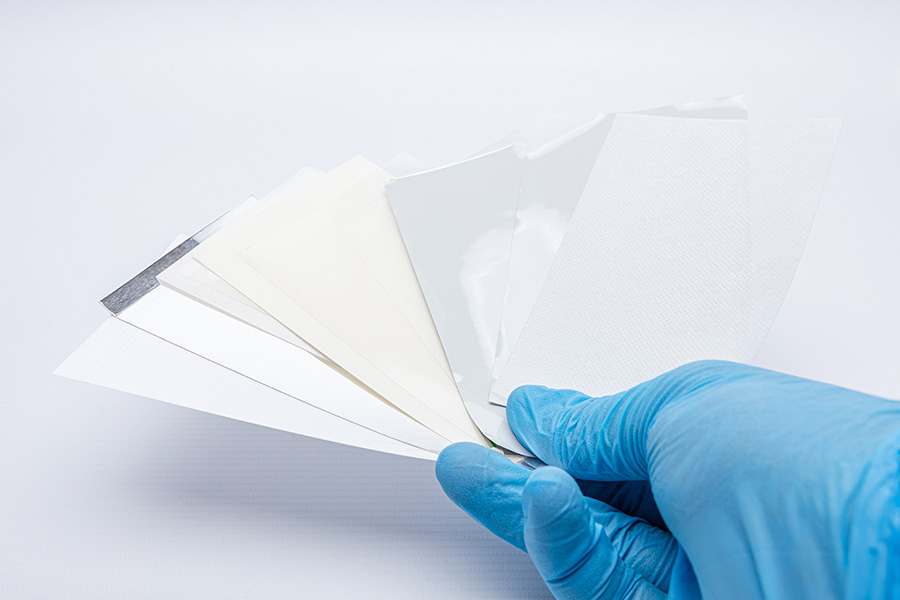Blog
What Are The Different Types of Plate Sealing Films?
Different types of plate sealing films – read more.
Plate sealing films are an innovative & versatile material that is used for microplate sealing & sample storage – to protect & secure microplates. Plate sealing films assist scientists in securely storing or transporting sensitive materials from one location to the next – without compromising integrity.
When it comes to plate sealing for your experiments, research studies and what your applications will be, there are a few different types of plate sealing films available:
For example, when working with chemicals, solvent or chemical resistant microplate sealing films are important to maintain seal integrity. For long-term sample storage at low temperatures, plate sealing foils are a great choice for forming an airtight seal while also being safe and inert for storing items such as cells, pharmaceuticals and medical supplies.
In the case of cell culture, breathable plate sealing films are important to allow for gas exchange while preventing evaporation and contamination of wells
Depending on the application, different sealing mechanisms such as self-adhesive, pressure activated, or heat sealable plate sealing films may be appropriate and added features like having pierceable sealing film can greatly enhance workflow.
In this article, we will explore the different types of plate sealing films, their uses, as well as which plate sealing films would be best suited for your needs.
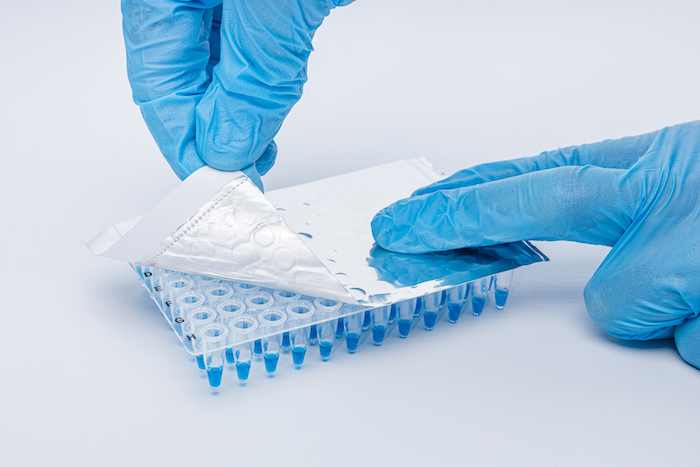
What are Plate Sealing Films?
Plate sealing films are essential for many laboratory experiments and protocols. They are designed to create an airtight seal between the plate surface and the film, allowing you to control the environment in which your experiment is conducted.
Microplate sealing films are single-use adhesive plate covers made of transparent plastic that allow the user to seal tubes and microplates to protect well contents from leakage, and reduce evaporation or contamination.
Plate sealing foils serve a similar purpose, but are better suited for long term and ultra low temperature storage while also helping protect against light. Read more on the pros and cons of microplate sealing films and foils.
Plate sealing films offer a wide range of capabilities and advantages with their ability to allow visible observation, a range of temperature tolerances from -20°C to 120°C and various methods like heat-sealing, self-adhesive or pressure sensitive sealing films.
Plus these versatile plate sealing films come in an array of formats such as individual access strips, individual sheets and rolls – each tailor-made for specific applications.
Ultimately, plate-sealing films are incredibly important for protecting the integrity of plate contents in the laboratory.
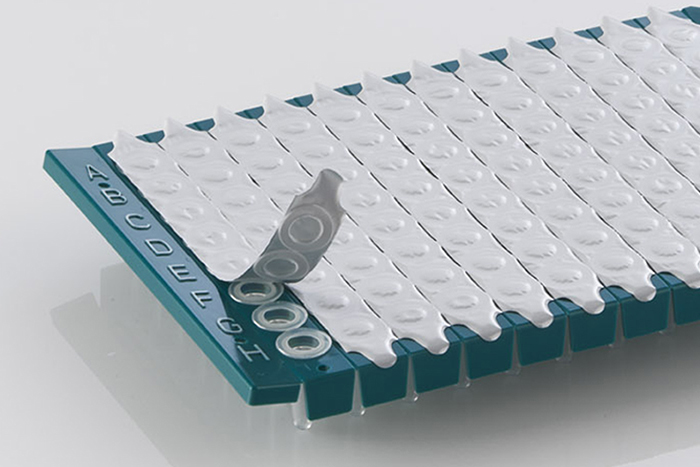
Different Types of Microplate Sealing Films
At iST Scientific, we offer a variety of plate sealing films for your applications that meet different requirements. Our plate sealing films fit most standard plate formats such as 96-well and 384-well plates.
Our plate sealing films and foils are available in standard sizes and lengths, which include rolls or individual sheets as well as individual access seals. You can also explore optically transparent or opaque sealing films, sealing foils, pierceable sealing films and temperature or solvent tolerant sealing films.
Most microplate sealing films can either be applied manually using a hand roller or a semi-automated sealing machine.
Chemical Solvent-Resistant Plate Sealing Films
Chemical solvent-resistant plate sealing films are designed for use with solvents or aggressive chemicals that may be used in experiments.
Dimethyl sulfoxide (DMSO) is a common solvent in laboratory reactions and notorious for its ability to melt plastic – so having chemical resistant seals is important when sealing samples in DMSO or other chemicals of a similar class.
These films are made from materials that create a tight seal and do not react to the presence of solvents. They can also provide an extra layer of protection against cross-contamination, making them ideal for applications requiring precision and accuracy.
Depending on the specific product, Chemical solvent-resistant plate sealing films have a seal integrity range of -80 °C to 80 °C, are suitable for long-term storage and can either be applied manually using a hand roller or a semi-automated heat-sealing machine.
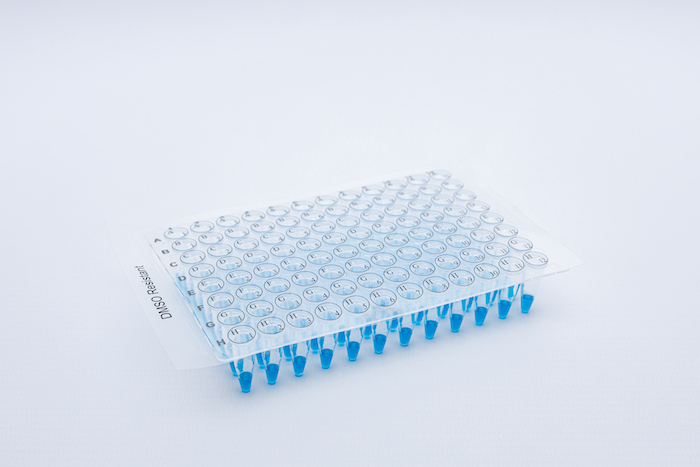
Foil Plate Sealing Films
Foil plate sealing films are typically made from aluminium foil or plastic-aluminium laminate. These materials create an airtight seal when heated and protect the plate contents against contamination, evaporation and light.
Foil plate sealing films can also provide excellent temperature protection, making them ideal for applications requiring long-term storage of plate contents.
Sample degradation due to light exposure is a common concern in laboratory experiments. To counteract the effects of this, foil seals are often used as they can effectively block out incoming light – whether it be for shielding sensitive samples or running fluorescence assays that involve delicate fluorophores which must remain intact.
Our Foil plate sealing films a seal integrity range of -80°C to 120°C, are suitable for very low and very high temperature storage and can either be applied manually using a hand roller or a semi-automated heat-sealing machine.
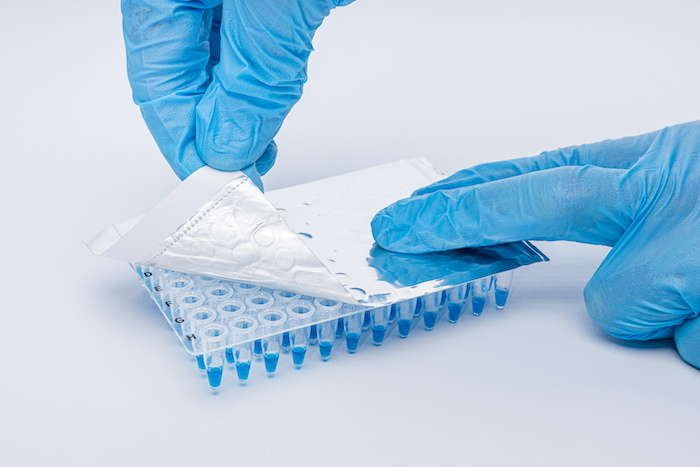
Breathable Plate Sealing Films
Breathable plate sealing films are designed for cell and tissue culture applications where gas exchange is needed for growth, but evaporation and cross-contamination need to be prevented.
Breathable plate sealing films are made from an oxygen-permeable material, such as polyethylene or polypropylene. They provide an airtight seal and allow plate contents to “breathe” to prevent plate degradation. This type of plate-sealing film is ideal for applications where plate samples may require additional ventilation and short-term storage of plate contents.
Our Breathable plate sealing films have a seal integrity range of -80°C to 110°C, are suitable for cell culture and short term incubations as well as insect studies and seed storage too, and can either be applied manually using a hand roller or a semi-automated heat-sealing machine.
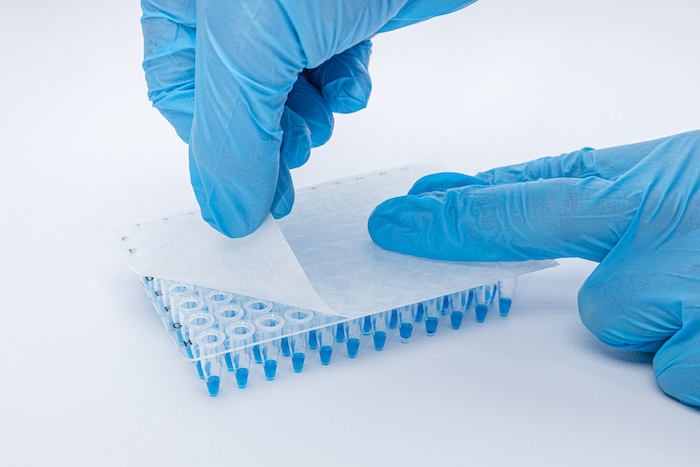
Pierceable Plate Sealing Films
Pierceable plate sealing films are designed for short-term handling and storage of samples that require multiple access to wells by pipet tips or robotic probes.
Pierceable plate sealing films create an airtight seal on microplates and can provide a secure seal against plate contents while allowing them to be accessed easily.
Our PierceASeal Foil PSTM Heat Sealing Film can be removed by peeling (from polystyrene only) and can be resealed by applying another Polystyrene Foil Heat Seal directly on top of a previously pierced seal.
Our QuickSeal Gas Perm Woven can be utilised for effective short term incubations, during which it demonstrates significant reductions in evaporation.
Our pierceable plate sealing films are available in standard sizes and lengths, which include rolls or individual sheets; self-adhesive pierceable seals, heat-sealable pierceable seals and pierceable foil seals.
Pierceable plate sealing films have a seal integrity range of -80°C to 120°C, are suitable for
capillary sequencers and automated liquid handlers, PCR, short-term incubation, cell culture, insect studies and seed storage and can either be applied manually using a hand roller or a semi-automated heat-sealing machine.

Different Sealing Mechanisms of Plate Sealing Films
Each laboratory application of plate sealing films is unique which is why the different types of microplate sealing films covered above are available with different sealing mechanisms to better suit the wide range of uses of microplate sealing films.
Heat-Sealable Plate Sealing Films
Heat-sealable plate sealing films are made from a variety of materials, offer a wide variety of applications and provide an airtight seal when applied with heat to provide an extra layer of protection against cross-contamination.
These plate sealing films can be used in applications where temperatures range from -80°C to 110°C (110°C when used with a pressurised heated lid) and can be used for difficult experiments that require additional protection, such as PCR assays and are great for ensuring complete seal integrity.
Heat-sealable plate sealing films are suitable for short-term room temperature storage; very low temperature storage; short term incubation; cell culture, insect studies and seed storage.
Heat-sealable plate-sealing films are designed to be used with plate-sealing equipment such as our HeatASeal S800 Sealing Machine to ensure 100% efficacy.
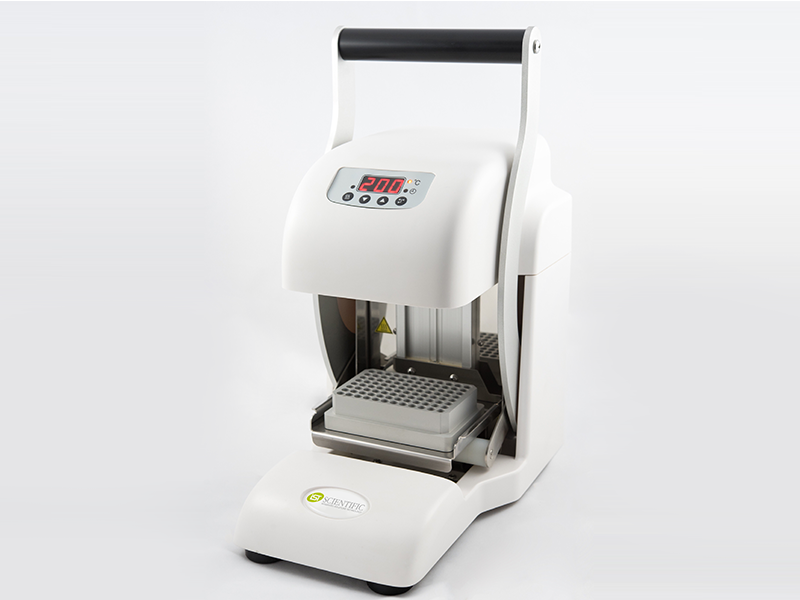
Self-Adhesive Plate Sealing Films
Self-Adhesive plate sealing films are made from a variety of materials and are suitable for various applications including PCR, incubation, sample storage, cell culture, sample application or retrieval and more.
These plate-sealing films have an adhesive layer that is designed to stick directly onto microplate surfaces and create a secure bond that prevents plate contents from evaporating or cross-contaminating.
Our self-adhesive plate sealing films are easy to use as they are non-sticky when removed from their packaging, easy to peel and provide an airtight seal.
Self-adhesive plate sealing films have a seal integrity range of -80°C to 120°C and can be applied with pressure and heat, using a hand rolleror a semi-automated heat-sealing machine for more specialised applications.
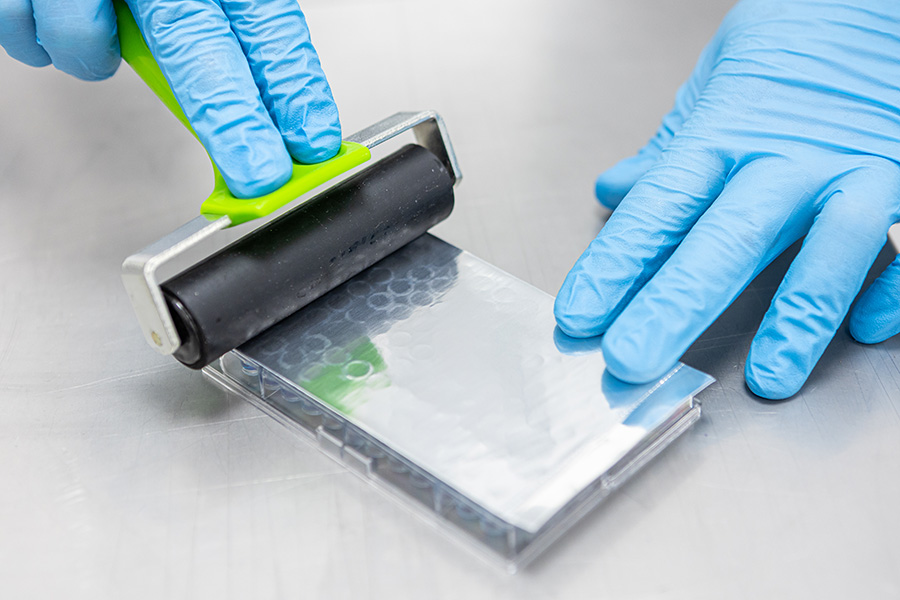
Pressure-Activated Plate Sealing Films
Pressure-activated plate sealing films are adhesive films that use a backing to stick directly onto the plate surface and create an airtight seal when pressure is applied to the plate surface.
The adhesive is contained within small capsules, allowing light to pass through to ensure the optical clarity of the seal. When the seal is in position, pressure can be applied to burst the capsules, releasing a strong adhesive only where the seal touches the raised well rims of the plate – the rest of the seal area above the wells remains optically clear.
They provide an airtight seal when pressed and can be used for complex applications requiring precision positioning on the plate surface. Pressure-activated plate sealing films are also available in various forms, including solvent-resistant and peelable options.
Pressure-activated plate sealing films have a seal integrity range of between -40 °C to 121 °C and can be used for various applications, including qPCR and other fluorescent applications, plate readers, microscopy and protein crystallisation.
For all adhesive seals, the best sealing results are achieved using our Hand Roller or HeatASeal S800 Semi-Automated Sealer.
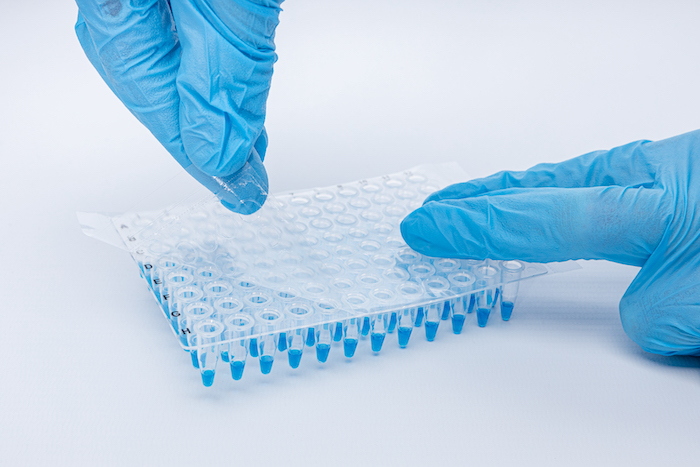
Get Expert Help Choosing The Best Plate Sealing Film For Your Needs
Sealing films offer invaluable functionality and come in an array of varieties to meet a diverse range of needs.
Not sure which plate sealing film is best for your needs? Let the experts at iST Scientific help you find the perfect solution.
At iST Scientific, we carry a wide selection of plate sealing films in various forms to meet your needs. Our products include heat-sealable and self-adhesive plate sealing films as well as solvent resistant and foil plate sealing films.
Explore our expansive selection available to find the perfect solution for your laboratory requirements.

